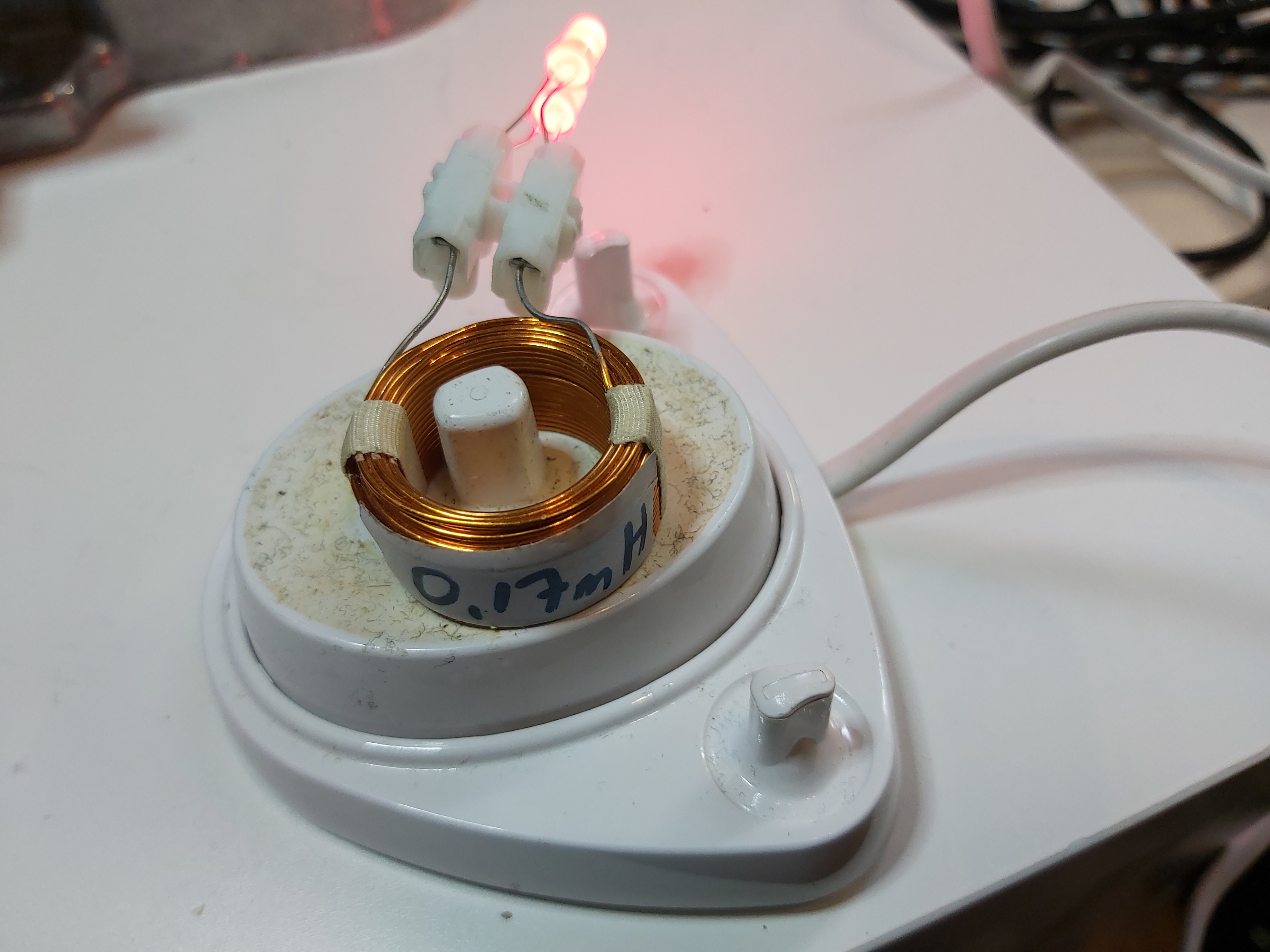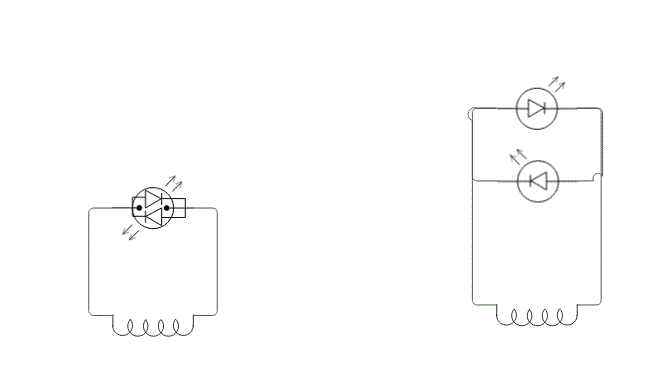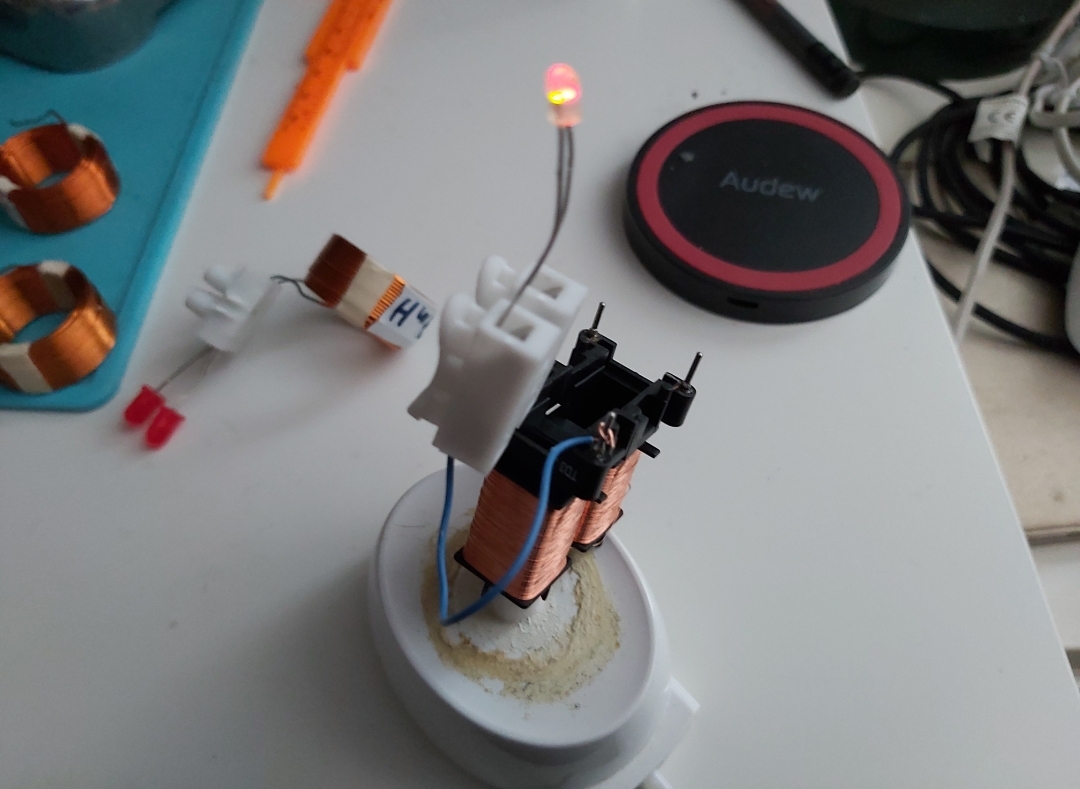Here is one experiment to power two LEDs using Oral B toothbrush charger. The two LEDs are wired to opposite directions in parallel to the output wires of 0.17 mH coil.
This circuit can be used as an interesting novelty circuit drive a LED wirelessly from a toothbrush charger. In addition to that the circuit can be potentially used as a tester to see if wireless toothbrush charger base works or not. I actually built two versions of circuit, one had two separate LEDs and other had one bidirectional LED.
How did I end up using this coil value? The fact is that is was just because I happened to have this type of coils and tested with it. It worked well. I did not calculate that that 0.17mH (=170 uH) would be in any way optimum for this. I just experimented with suitable physical size air core coils. This coil has around 80 turns (calculated visually from coil). This 170 uH coil gives around 3-4V RMS open circuit voltage (peak to peak varies 7-12V). When led is connected around the current is around 9 mA. Those are very suitable values for driving LEDs.
The current is determined by output voltage (minus led voltage loss) divided by things that limit current flow: coil DC resistance, coil inductance detail, coupling factor between transmitting coil and receiving coil (depends on coil size, shape distance, locations). The coil DC resistance is around 1 ohms. The 170 uH coil has impedance if around 40 ohms at around 40 kHz. The coupling factor not known and changes when you move coils. Too many unknowns to use any exact equation.
Another 0.33 mH also worked very well. With 330 uH the open circuit voltages were around 1.5 times higher and LED current around 6 mA.
The number of turns determine the open circuit voltage. It needs to be higher than LED forward voltage loss. Too few turns and low inductance means too low voltage for LEDs. Single turn turn coil shows around 50-100 mV RMS voltage. That is far too low for driving LED. I this at around 40 turns the LED could start working somewhat acceptably I quess (but I have not tested).
Higher number of turns seem to work: Here is 52 mH (350 ohms) coil that does not fit well in place but still lights a LED.



3 Comments
Tomi Engdahl says:
The circuit seemed to work with induction cooker also
MyMilestoneCard says:
A really great stuff you have shared with us. Keep up the great work.
alexanderjohn says:
This is a fascinating experiment! It’s interesting how you used the 0.17 mH coil and achieved suitable voltage and current for the LEDs. Your approach reminds me of iq test free online – it’s all about experimenting and finding the right solutions through trial and error. Keep up the great work!